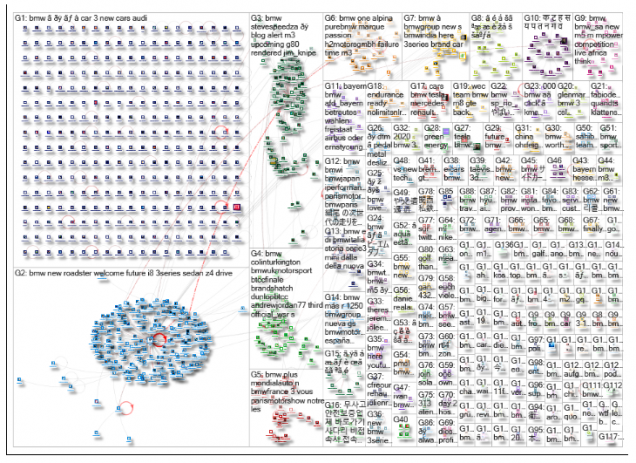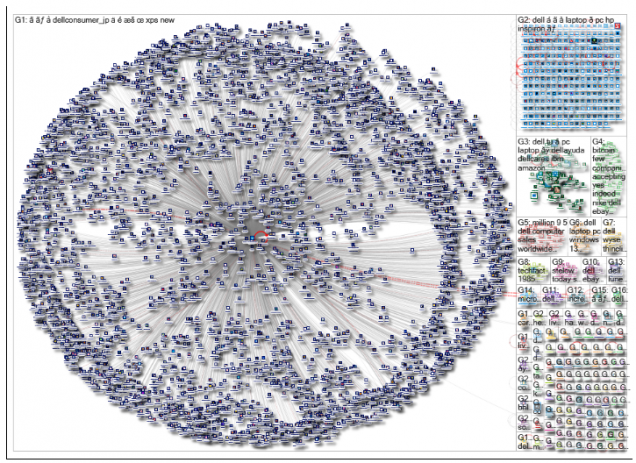Marc Smith, Lee Rainie, Ben Shneiderman and Itai Himelboim found six conversational archetypes on Twitter conversation networks. They are Polarized Crowd, Tight Crowd, Brand Cluster, Community Clusters, Support Network and Broadcast Network. In my personal view, though these six different types can’t cover all the conversations happening on Twitter, they do represent a large volume of Twitter conversations, especially those topics with great influence online relating large amount of audiences, which is a reflection of the vertical integration of infomediation today because of the technology we have.
According to Smyrnaios, infomediation is the set of socio-technical mechanisms such as software, services, and infrastructure that provide internet users with all types of information online and connect them with users (Smyrnaios, 2018). In the social networks, the infomediation process is going through a vertical integration that the media field and opinions are getting controlled by several oligopolies because they control the infomediation infrastructure, which are “operating systems, consumer electronics, telecommunications networks, and data centers” (Smyrnaios, 2018).
On social network platform such as Twitter, we can see the influence of major influencers by their “connectness” to other accounts and the role they play in a specific topic. Next, we will look at two different models discovered by Marc Smith et al to investigate the vertical integration of the social network in the commercial field, brand cluster and service network.

https://nodexlgraphgallery.org/Pages/Graph.aspx?graphID=171350
The first model to be discussed is the Brand Cluster networks shown as above. This is a graph of people talking about the automotive brand, BMW. As shown in the figure, we can see that this is a typical brand cluster where people are talking about a same brand, though with little connections, such as replies, mentions with the other members in this group. In this model, the density of this group is very low and there are many isolated participants. Many members are likely to mention the brand or add the hashtag of brand without having any connection to other people who also mention the brand. The reason behind is also simple to understand. The members are almost the customers or other people who are interested in this brand so they choose to speak out their thoughts online. This is often an opinion field where everyone is trying to show his or her own opinion rather than listening and interacting with others. We can compare this to a comment section on the website of a brand where people show their opinions, complaints or attitudes. We can see that there are few edges linking users in this network and many different groups of different topics because people are less involved in commercial settings. This is a model happens a lot in advertised products, public events, and major news events where the topic is the most powerful drive in the discussion so that the role of interactions of different users are less important than the major topic. Individuals seem to have the right to speak about a topic, however, their freedom of speech is deconstructed by their usage of hashtags of a brand, which increases the influence of the brand. Their words become a single constitution of a larger brand buzzword cloud. Through hashtags, people tried to make their opinions seen by more people. However, this also reflects the fact that individual users have little control and power in large scale opinion spreading that they have to rely on the influence of a famous brand by hashtags. The existing brands are leading the vertical integration further more to gain more influence through spontaneous user generated content.

https://nodexlgraphgallery.org/Pages/Graph.aspx?graphID=171285
The other conversation type to be discussed here is the Support Network model where the central account reaches out to many other accounts, but those other accounts are not often connected to one another directly. It is a structure built on outflow led by the central player more than on in-bound conversation. As we can see, the graph is a perfect circle where the center is the Dell service account “@dellconsumer_jp” and “@dellcaresjapan”, “@delltechcenterj”, reaching out to many other accounts online, mostlt consumers. At the same time, those other accounts are pretty isolated to each other with barely no interactions among them. Corporations are actively taking initiative roles in communicating with customers so that they can actively change, modify the brand image of their company. The individuals located on the outside of center are not active in terms of talking about the brand. However, their attitudes and impressions may change through this kind of communication. In this model, the companies are active players in vertical integration of public opinions about their brand.
As we discussed before, the commercial institutions are still playing important and dominant roles in online opinion fields, leading the vertical integration process of infomediation among their target consumers. In conclusion, we, as consumers, should be aware of this process so that we can keep critical to commercial groups and their voices online.
Another concern related to the six models is that though they represent a large volume of the Twitter buzzwords, we should not neglect the fact that there is also long-tail effect on Twitter topics. These models often lead us to some large-scale discussion online such as an important social topic or commercial brand. However, there are many other types of micro conversational groups online such as the communication among a small group of friends, the soliloquy of individual users,etc. which take a large amount of online traffic, though they are not influential to other users and the macro public opinion online.